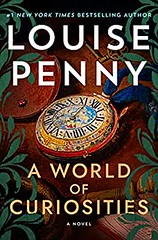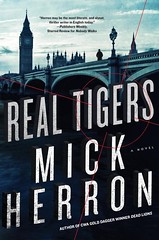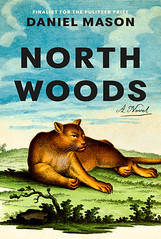 System Collapse (Murderbot Diaries #7)
System Collapse (Murderbot Diaries #7)
by Martha Wells
![]()
The first review of System Collapse on Goodreads describes it as a full-length novel (in all caps, no less). Which is weird, because it felt like a novella to me. To check whether my impression was correct I turned to the book’s listing on Amazon, which doesn’t say one way or the other but where, I note, the Kindle version is priced the same as the five previous installments, all novellas.
I’m not sure I brought my A game to the latest installment of Murderbot’s diary. I never got a feel for the planet it’s set on, nor for the human characters (whom I recall were better drawn in previous stories). Nor could I remember significant events from Fugitive Telemetry, the previous installment. Remembering what came before is, I think, critical to keeping up with the Murderbot story, and a few flashbacks would have helped immensely.
As always, I enjoyed Murderbot’s inner dialog and banter with the shipboard AI nicknamed ART. There are a couple of promising new human characters and two new rogue SecUnits (thanks to Murderbot) who will doubtless figure in future novellas … more than enough reason to keep reading the series … but I never fully engaged with this one.
 Killers of the Flower Moon: The Osage Murders and the Birth of the FBI
Killers of the Flower Moon: The Osage Murders and the Birth of the FBI
by David Grann
![]()
This book will upset white schoolchildren and turn them against their own race. It makes Native Americans look good by comparison. It should be banned. Moms for Liberty, are you listening?
When Killers of the Flower Moon starts to show up on high school reading lists, there’s going to be an outcry, and I’ve just explained why. I’m pretty hardened to the history and present reality of racism and corruption in the United States, yet still shocked at the depths of depravity exposed here, a hideous chapter intentionally left out of the history books we studied as children.
In the 1970s I spent a few years in Enid, Oklahoma, not far from Osage Nation, and well remember white Oklahomans’ dismissive attitudes toward Native Americans. I chalked it up to plain old racial prejudice … at the time unaware that the older Oklahomans I walked among had living memories of the Osage murders, just as I was unaware of the murders themselves.
David Grann’s painstaking research is evident on every page. At the end, I was convinced he’d uncovered, nearly a full century after the events described, the squalid, shameful truth … that not just a few well-placed masterminds and their criminal cohorts, but nearly every white person (along with plenty of mixed race and even some full blood Native American family members) in Osage Nation, had his or her eye on tribal money and would stop at nothing, even murder, to get at it. Nor had my younger self, hearing apocryphal tales of 1920s “rich Indians” squandering oil money on fancy cars, known that totally undeserving white “guardians,” appointed by white justices, actually controlled the money owed to tribal members.
Shocking as all this is, Grann’s meticulous recounting is somewhat dry. The only historical character he breathes a bit of life into is Tom White, the Bureau of Investigation agent who helped to get at part of the truth and put at least one mastermind behind bars. His closing chapter, where he follows up with, and helps bring closure to, grandchildren and great-grandchildren of the unsolved murdered, is poignant.
Overall, very much worth the read. I’m not joking about it becoming a banned book, though. It’s already happening … in Oklahoma!
 A World of Curiosities (Chief Inspector Armand Gamache #18)
A World of Curiosities (Chief Inspector Armand Gamache #18)
by Louise Penny
![]()
This is the first Inspector Gamache mystery/police procedural novel I’ve read. I came to it after watching Three Pines, the excellent streaming TV adaption of an earlier Inspector Gamache novel (available on Amazon Prime).
The 18th installment in a series of novels is an odd place to start, but I got right into the story (knowing the eccentric village characters from the TV series was a great help, because there are a lot of them to keep track of).
The crime at the heart of A World of Curiosities, as the inspector peels back its layers, goes from intriguing to frankly unbelievable. By unbelievable, I mean the elaborate scheme cooked up by a serial killer out for revenge on Gamache, a killer who’s always three steps ahead, inhumanly infallible in playing out a long and complex game … so much so that it’s a bit of a letdown when he’s defeated in a mere tussle at the end.
As my personal introduction to the Inspector Gamache/Three Pines novels, though, A World of Curiosities was a solid four-star read, and I will certainly check out some of the earlier Inspector Gamache novels.
 Real Tigers (Slough House #3)
Real Tigers (Slough House #3)
by Mick Herron
![]()
From my review of Dead Lions, the second Slough House novel:
The first two Slough House novels, Slow Horses and Dead Lions, have been serialized on streaming television (available on Apple TV), with Gary Oldman in the role of Jackson Lamb. Both shows are faithful to the novels, more so than most television adaptations. I’ve watched both; now that I’ve read the second novel I see a few narrative differences between it and the show but not enough to change anything important.
As for the novel: it’s brilliant, funny, tense, and in parts a proper thriller. But also cozy, if that makes any sense. The characters, with the possible exception of a new exile from Regents Park, Shirley Dander, seem almost alive … and the characters from the first novel are by now becoming old friends.
I absolutely loved the cat’s tour of Slough House and its denizens that opens the novel, and the mouse’s visit that closes it. I actually read those out loud to my wife. To repeat myself: brilliant.
(Real Tigers, the streaming TV version, is now running on Apple TV, but I read the book and wrote this review long before it was.)
In this novel, MI5 palace intrigue takes a nasty turn, Shirley Dander is revealed as quite the badass, things are altogether less cozy, the dogs get theirs, Jackson Lamb protects his Joes (or rather I should say Jackson Lamb protects the Joes who protect themselves), and the opening and closing tours of Slough House are conducted by a ghost.
As before, I very much look forward to the next novel in the series.
 North Woods
North Woods
by Daniel Mason
![]()
I suspect we all, even the irreligious, long for an afterlife. It can’t just end, can it? I mean, light’s out and that’s it?
Which at least in my case explains what I loved about North Woods: the abstract notion of living on, even if only in the speculative thoughts of a historian’s mind; better yet in the supernatural sense, able to look on as new generations come upon, inhabit, and change your old house, maybe even, sometimes, to interact with them.
Daniel Mason gave me a perfect blend of both, along with lovely observations of nature and glimpses into the lives of the men, women, children, and animals who succeed one another in the house in the north woods. Something-something Cloud Atlas here. The final chapter, at least to me, was quite moving.
 Hunting Badger (Leaphorn & Chee #14)
Hunting Badger (Leaphorn & Chee #14)
by Tony Hillerman
![]()
My enjoyment of the streaming series Dark Winds (AMC+) brought me to Tony Hillerman’s Leaphorn & Chee novels, which I’d long known of but had never read.
I liked the first Leaphorn/Chee novel, The Blessing Way. This one, the 14th in the series, hit me as sort of meh. It’s repetitive, and I feel Hillerman writes more telegraphically in the later novels, having built up a large fan base who’ll stick with the novels no matter what, in the manner of Lee Child and his Reacher novels.
I was surprised that the romance between Jim Chee and Bernie Manuelito has, this far into the novels, not yet developed into something serious, or that friendship and mutual respect is only just beginning to define the relationship between Leaphorn and Chee. From the TV series, I had the mistaken expectation that characters and relationships would be well established by the 14th novel, far beyond what I had already seen on TV. Note to self: read the book before watching the movie.